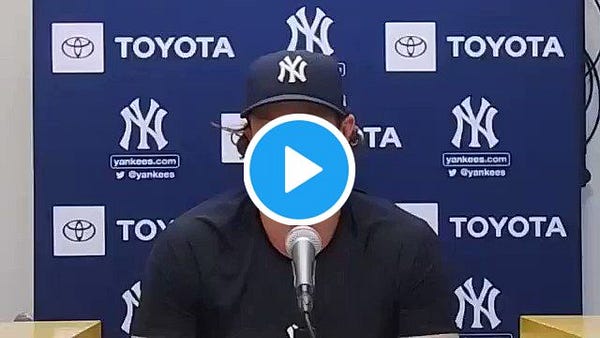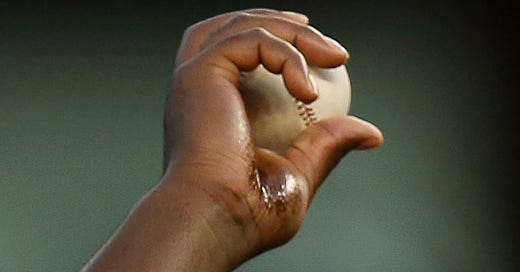How Sticky Stuff Is Different From PEDs
In the last few weeks, the great “sticky stuff” predicament, which has been bubbling around baseball for a while, finally became impossible to ignore. The MLB now has plans for more proactive enforcement of the rules against doctoring the baseball, and almost as soon as those plans became public, spin rates around the league declined, leading to speculation about who had been using what on the ball. Last week, when Gerrit Cole was asked directly if he’d ever used Spider Tack, a “ultra-tacky” substance sold to help weightlifters with their grip, he paused for several seconds before saying, “I don’t quite know how to answer that, to be honest.”


This is all very reminiscent of the steroid panic in baseball that began two decades ago. As was the case then, baseball is seeing statistics it hasn’t seen in decades (then it was home runs; now it’s strikeouts). And like in the steroid panic, the MLB has long encouraged a murky uncertainty around the rule and its enforcement. And, crucially, this story has led to rampant speculation about which players are using which substances. Even Cole’s non-answer felt very evocative of a particular kind of carefully worded, non-admission admission that was common in the steroid era. As Jeff Passan put it, summing up the position of narcs everywhere, “If you’re asked a yes/no question, and you don’t say no, then it’s Yes.”
But, overall, the sticky stuff situation does not seem to be leading to the same witch hunt dynamics that dominated the steroid era. Almost as soon as Cole gave his answer, other players and even some in the media rushed to defend him, and insist that this wasn’t about him, or any other individual players. The main takeaway from Cole’s answer was about how widespread the issue is, and not that Cole himself ought to be disciplined, or his numbers looked at askance. This is decidedly NOT how steroid use was treated, with every allegation leading to a reassessment of a player’s legacy.
It seems like there are two main reasons for this dissimilarity. The first is one of those weird baseball things, and the second is a fundamental lesson about labor organizing.
First is the odd way that baseball has historically treated doctoring the ball. Even though it has always been explicitly outlawed to apply foreign substances or scuff up the ball—which is more than you can say for steroids—it has also always been accepted as part of the game. As a million people have pointed out this month, Gaylord Perry made the Hall of Fame after a career where he pretty openly broke this rule. The ability to sneak stuff onto the ball was treated almost as a legitimate skill. It’s only now, when depressed offense is such a problem for the league, that this skill is being reevaluated, as a way to take some of the edge away from the defense.
Which brings us to the second major difference between this and the steroid era: the state of the relationship between players and ownership. In 2002, when the collective bargaining agreement included steroid testing for the first time, both players and owners were desperate to avoid another work stoppage, after the damage that cancelling the 1994 World Series did to the league. In fact, the 2002 agreement was the first CBA agreed to without a work stoppage in 32 years.
There has not been a work stoppage in the MLB since, but now the relations between the players and owners are very strained, in a way that has bled into the conversation about the game’s offensive numbers. A few days ago, Pete Alonso of the Mets suggested that owners had intentionally changed the ball to lower offensive output, in a bid to depress the contracts of hitters in the coming free agent class. He also suggested that the original juicing of the ball, back in 2015, had been done for the same reason—to hurt the pitchers that were free agents then. There really isn’t much evidence to support this theory, but the fact that he feels comfortable sharing it indicates the level of distrust between players and owners.
And this distrust is keeping the players loyal to each other. Players do seem eager to regulate the sticky stuff—they are also concerned about the flat offense throughout the league. But, for now at least, they are not engaged in the kind of finger-pointing and legacy bashing that made the steroid panic so ugly. It’s an old cliché of labor organizing that the best organizer at a workplace is a bad boss. And, indeed, that seems to be exactly what has gone on here. The players’ distrust of ownership has made them reluctant to blame each other for bending the rules, and insist on enforcement that is consistent but not punitive. We’ll see how the new rules work out, but the lesson, as always, is that class solidarity is good for everyone.



